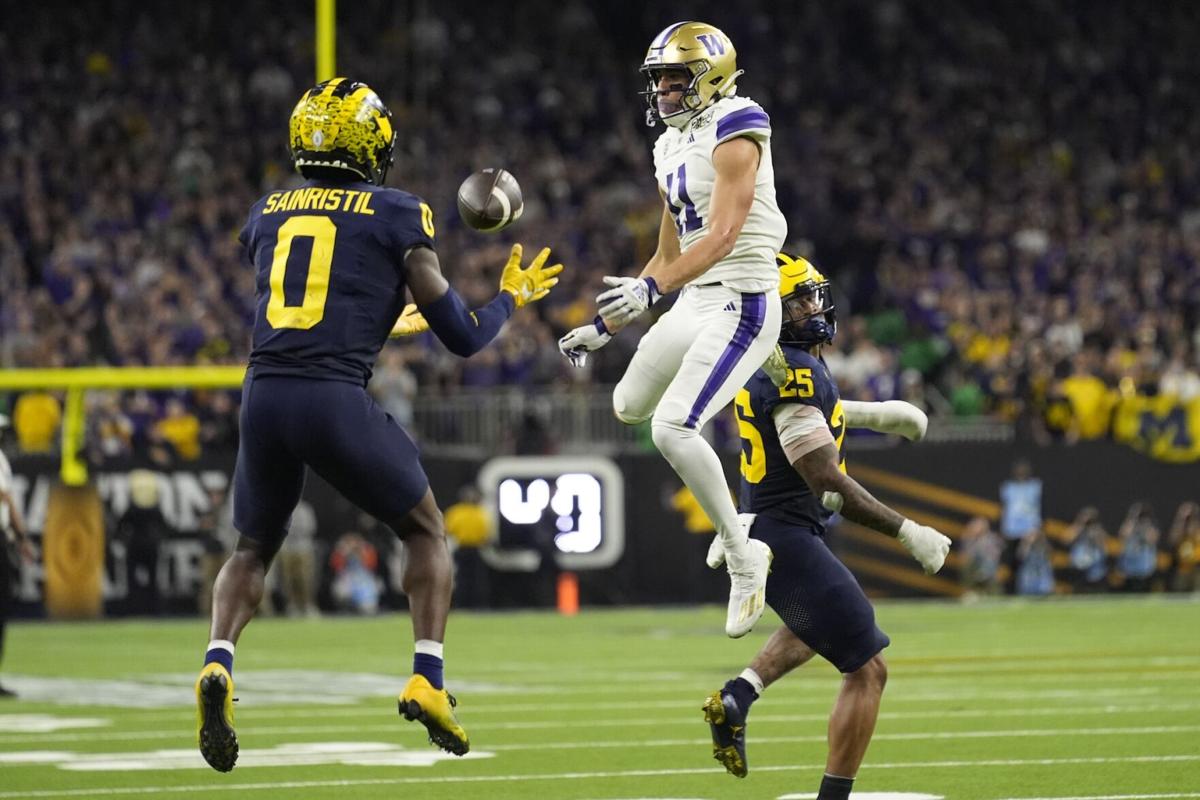The College Football Playoff recently revealed the kickoff times and television networks for its expanded event, which will debut in December and change the sport like nothing before it.
The move to 12 teams dwarfs the implementation of the Bowl Championship Series in the late 1990s and even the shift to the four-team playoff a decade ago.
It opens the stage to schools that previously had no chance to qualify. It attracts regions of the country that had been in the sport’s shadows, and it makes each week of the regular season more meaningful. No longer will two-loss teams be eliminated from contention before October. Even a three-loss team could qualify.
The four major bowls on New Year’s Eve (one) and New Year’s Day (three) will continue to form the playoff’s heart and soul. Only now, they will serve as the quarterfinals, placed in the middle of a month-long event that starts Dec. 20 and ends on MLK Day.
The new playoff will span three holidays.
It will be longer than March Madness.
Will fans embrace the sprawl?
Will they forget about the semifinals, which are scheduled for Thursday and Friday on the second week of January?
Will they lose interest during the 10-day shutdown between the semifinals and the championship game on Jan. 20?
Diehards will remain engaged, but will casual fans, so vital to the CFP audience, maintain interest for 32 days? Many of them associate college football with Saturdays and with New Year’s Day. In the expanded playoff, five of the 11 games, including the semifinals and championship, will be played on weeknights.
Why the tilt to weeknights? The NFL, of course.
By starting the playoff earlier and ending later, college football has trespassed on NFL terrain, and the folks on Park Avenue aren’t happy.
That became clear last month, when the NFL released its schedule for the 2024 regular season and slotted two major matchups for Saturday, Dec. 21 as a counter-programming sledgehammer.
The Chiefs-Texans showdown is scheduled for 10 a.m. (Pacific) on NBC, opposite the first game of the CFP’s opening-round tripleheader.
Then comes the Steelers-Ravens collision on Fox, at the same time as the second playoff game of the day.
Those two CFP games are on TNT and will generate perfectly acceptable ratings. But the casual fans required for blowout viewership could prove elusive.
The back end of the CFP schedule avoids direct conflict with the NFL, but there’s an eight-day break before the semifinals (on Thursday and Friday) and a 10-day gap until the championship (on Monday).
There’s only so much oxygen in the media ecosystem, and the NFL undoubtedly will consume all but a fraction.
It’s bad enough for the CFP that the final weekend of the NFL regular season falls between the quarterfinals and semifinals.
Even worse: The entire NFL wild card and divisional playoff rounds unfold between the semifinals and the championship game.
How many fans will re-engage with college football on the evening of Monday, Jan. 20?
The expanded CFP is a massive work in progress, and executives in charge of the event are keenly aware that tweaks might be required. They have smartly declined to set a competition schedule for the next version of the playoff, starting with the 2026 season.
From here, the path to a thriving postseason is clear: College football should open Week Zero, the Saturday before Labor Day weekend, to a full slate of regular-season action.
The change would add immense flexibility to the competition calendar. Conferences could move up their championship games to the Saturday after Thanksgiving, thereby allowing the CFP to start earlier, end earlier and limit conflicts with the NFL’s postseason.
Another option: Simply eliminate the conference championship games altogether — the SEC would undoubtedly resist — and start the CFP on the second weekend in December, currently the home of the Army-Navy game, the Heisman Trophy presentation and no other major college football events.
That said, the expanded CFP is lacking quality options on the sports media calendar.
Any reconfiguration of the schedule that doesn’t feature six quarterfinal and semifinal games in early January would risk alienating the six major bowls (Rose, Sugar, Fiesta, Orange, Cotton and Peach) at the heart of the current system.
Also, the NFL is mulling expansion of the regular season to 18 games, a move that would squeeze the CFP’s precious, but limited, broadcast windows in January.
No changes are imminent. Conference commissioners and media executives will watch the CFP unfold next winter, fingers crossed that the 32-day sprawl and NFL postseason don’t kneecap interest.
The expanded playoff will do wonders for the sport’s regular season — of that, there is zero doubt.
But the event itself faces significant challenges, courtesy of the behemoth on Park Avenue.
Now that the Arizona Wildcats sports calendar for 2023-24 has concluded, the Star's Justin Spears and Michael Lev hand out awards for Best Team, Best Moment, Coach of the Year, Male Athlete of the Year, Female Athlete of the Year, Transfer of the Year and Freshman of the Year. Plus, a look at Spears' preseason Big 12 poll and All-Big 12 Team. How many Wildcats crack the All-Big 12 Team?





